We were going through a couple collections of MR models that were donated to the club on Tuesday night when a couple of us opened a box of MOW cars. Discussion ensued. We’ve discussed what MOW and non-revenue equipment would be appropriate sitting on a track or two near the roundhouse. And we pass around pics of unusual MOW equipment when we see them – “Wonder what that piece might look like parked in our engine facilities!” So, I started this search on non-revenue equipment based on seeing the first pic. But late in my search, as typical, I was distracted by a little gold nugget of info on early petroleum transportation!
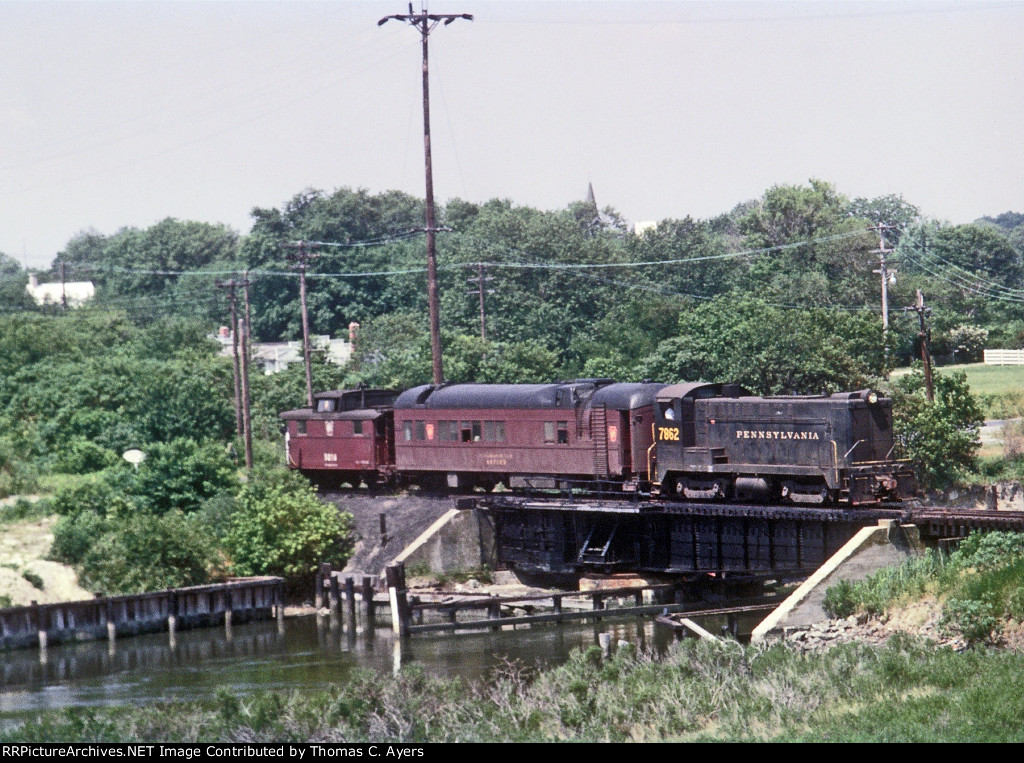
Another great pic shows #497125 taken near Lewes, Delaware, during June of 1967. Prominent here is Pennsylvania Railroad engine #7862, a BS-6A switcher built by the Baldwin Locomotive Works as number “5962” in March of 1948, rated at 660 horsepower, and renumbered “7862” in preparation for the PRR-NYC merger. In this context, it’s pulling PRR Clearance Car #497125.
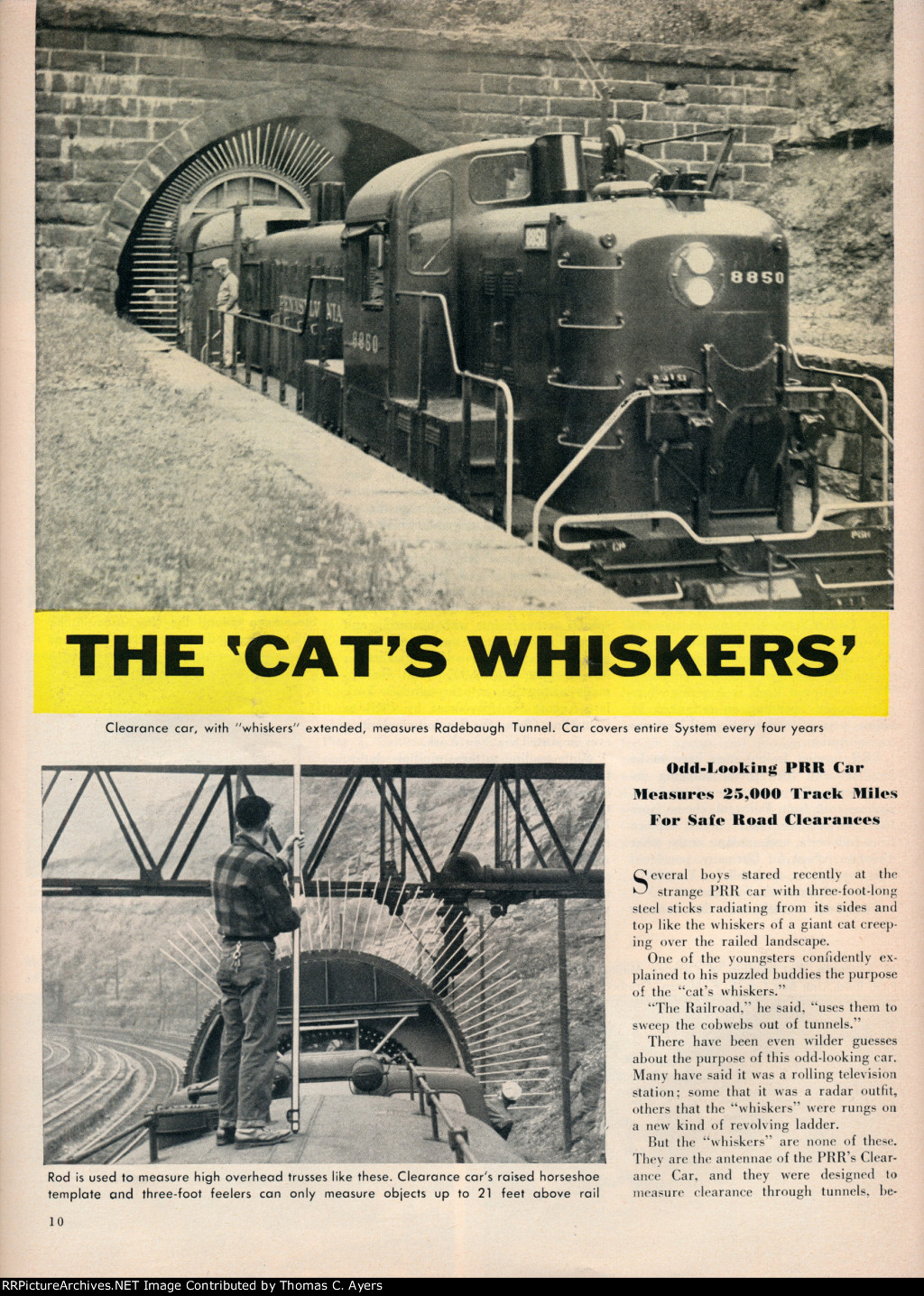
Here’s a 2 page article written about #497125 published in Feb 1954 – showing the clearance car in action.
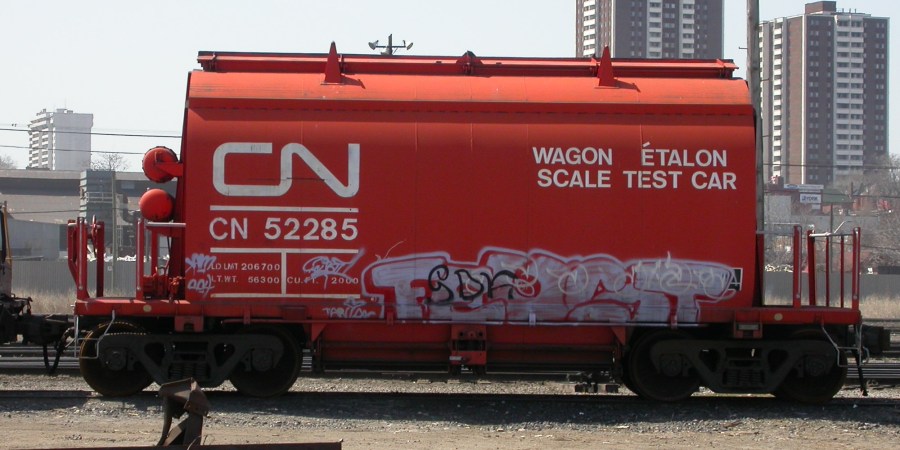
Test cars for the RR car scales were necessary to keep the scales calibrated. Here’s a modern test car – CN #52285.
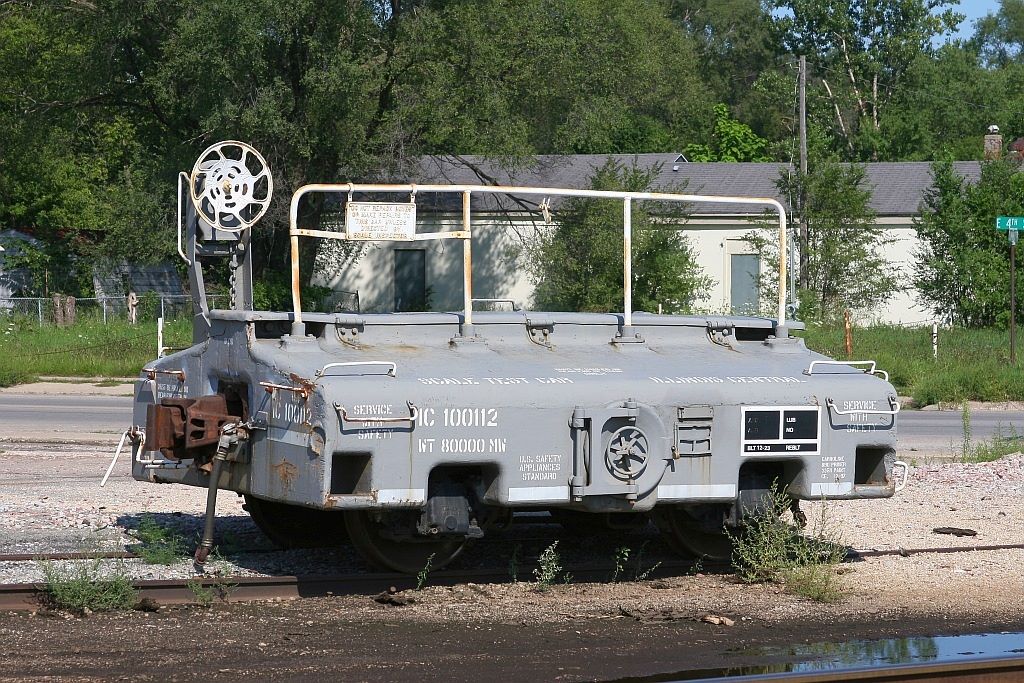
IC #100112 has more of a classic look. Even though the pic was taken in 2009, at Waterloo Iowa, the car still sports IC colors. The caption for this pic says that you haul this car on rear of the train next to the last car, and you should not exceed 30 mph. The center lock wheel locks the hatch which leads to a compartment used for carrying scale inspectors tools. The caption notes that the car looks like those built by Lake Erie Engineering, Buffalo, NY.
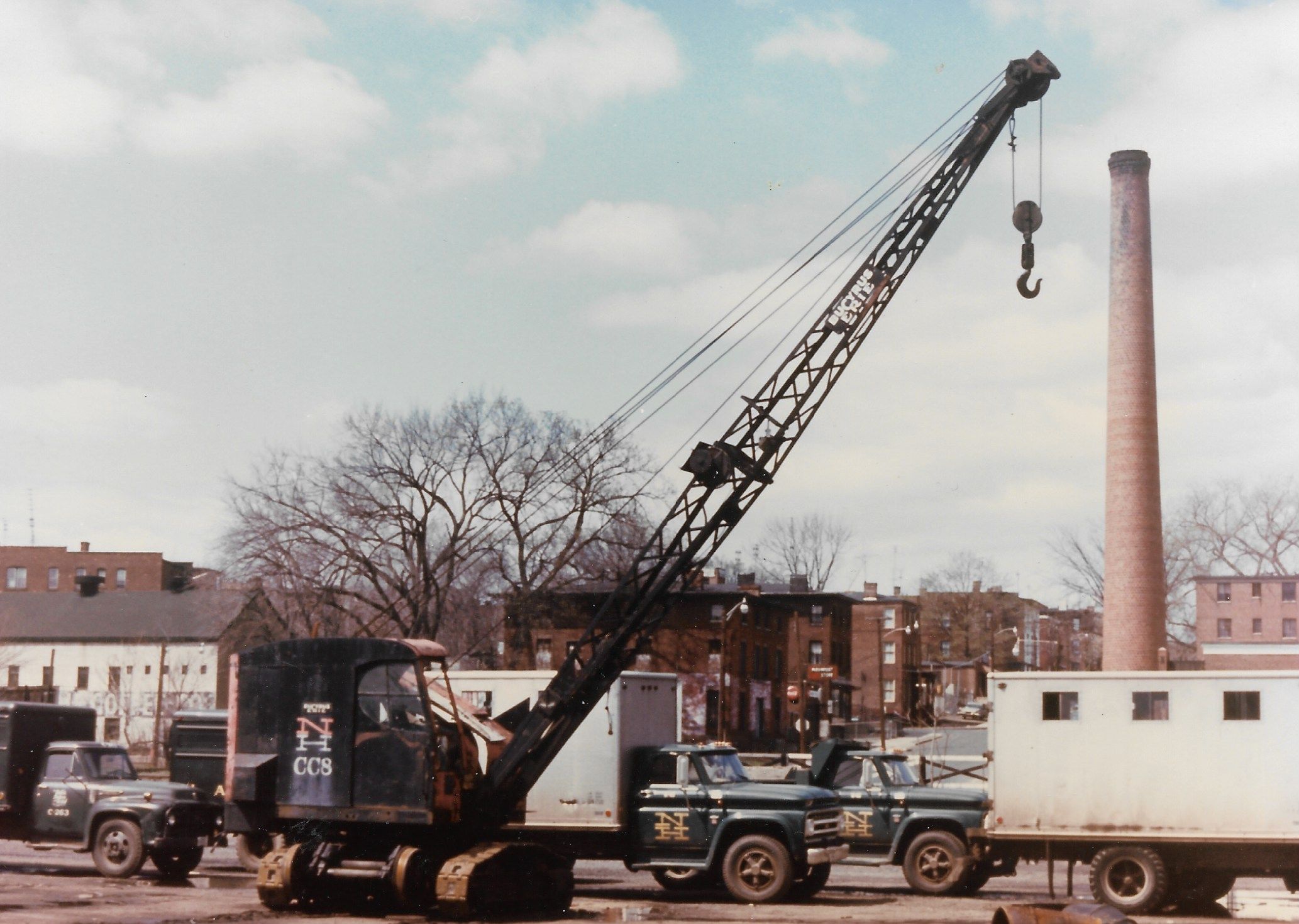
Cranes are always an important and a desired (by MR’ers) piece of equipment for the MOW track. New Haven #CC8 is a lighter crane. Note the wheels lift to allow the crane to move on its tracks. This pic was taken in 1967 at Hartford, CT.
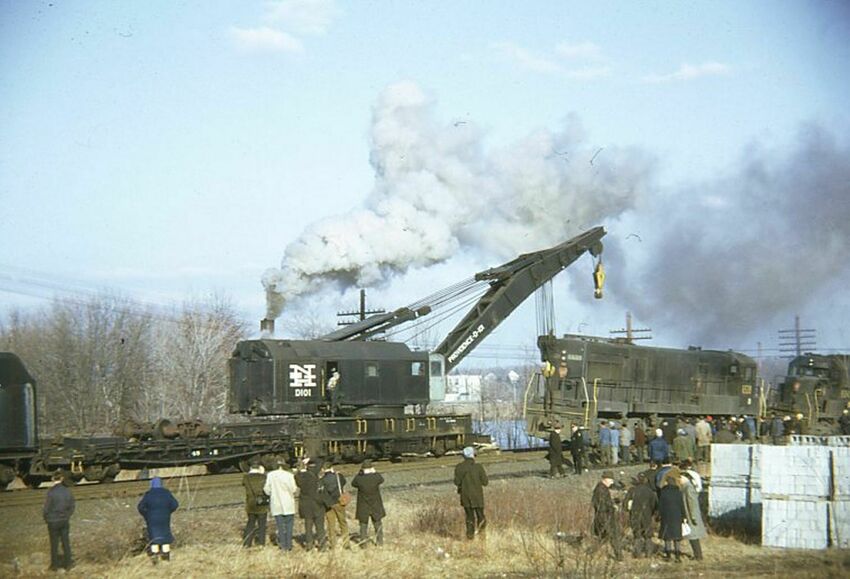
Here’s a heavier crane, NH #D101 rescuing a derailed Penn Central unit. The mishap was on the old New York Central/B&A in Natick, MA. Seems the number of supervisors is pretty large!
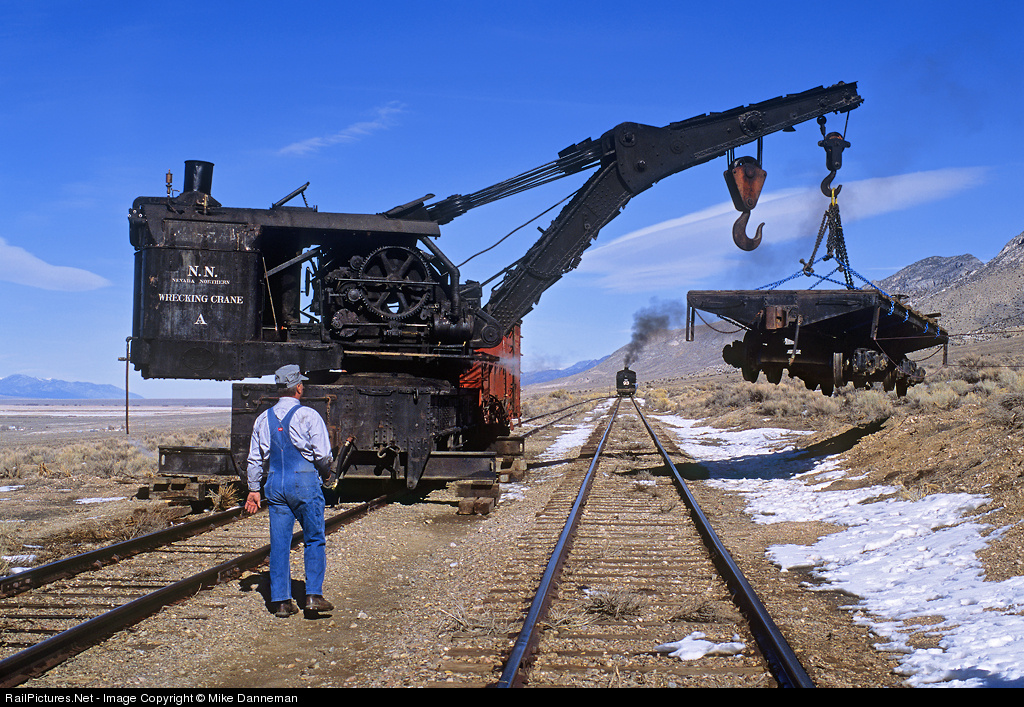
Since we’re on cranes, Northern Nevada steam powered wrecking crane shows how to lift a flatcar back on the rails at Lavon siding on the Adverse Branch north of East Ely, Nevada, on February 3, 2007. The crew is performing a “derailment cleanup” with the steam crane as part of NN’s Winter Steam Spectacular weekend. In the background, NN 2-8-0 No. 93 pulls another flatcar that this car will eventually be loaded on.
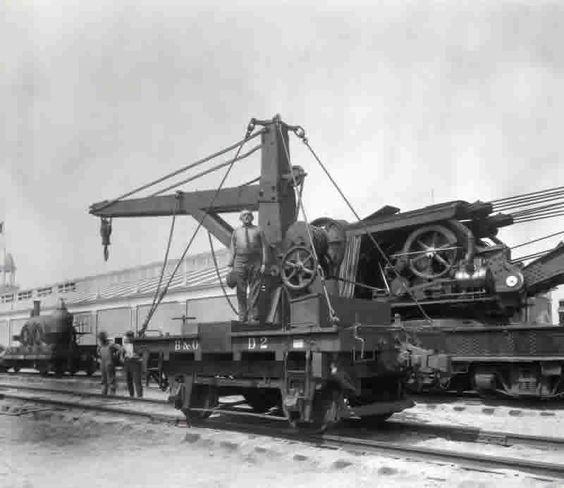
This is a great pic of a duo – B&O #D2 small crane/derrick with what appears to be a large steam crane behind it.
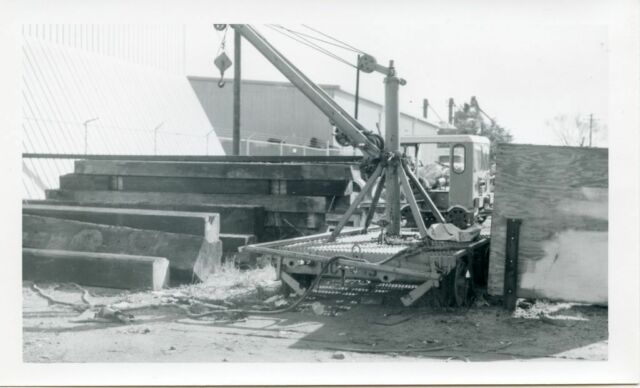
Here’s another small crane/derrick car for SP. It doesn’t appear to be on a track, but the wheels appear to be flanged for track.
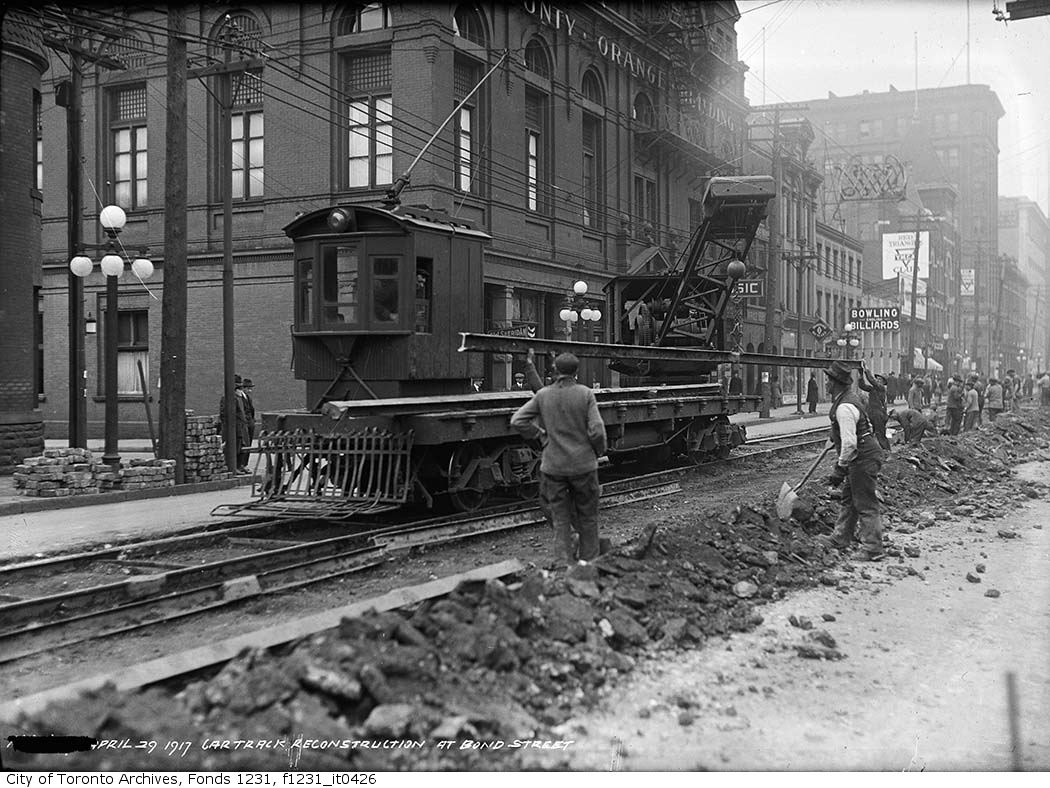
When I found this pic, I had to throw it in – this is an electric crane being used to help lay rail on the Toronto streetcar line in 1917. Great pic!
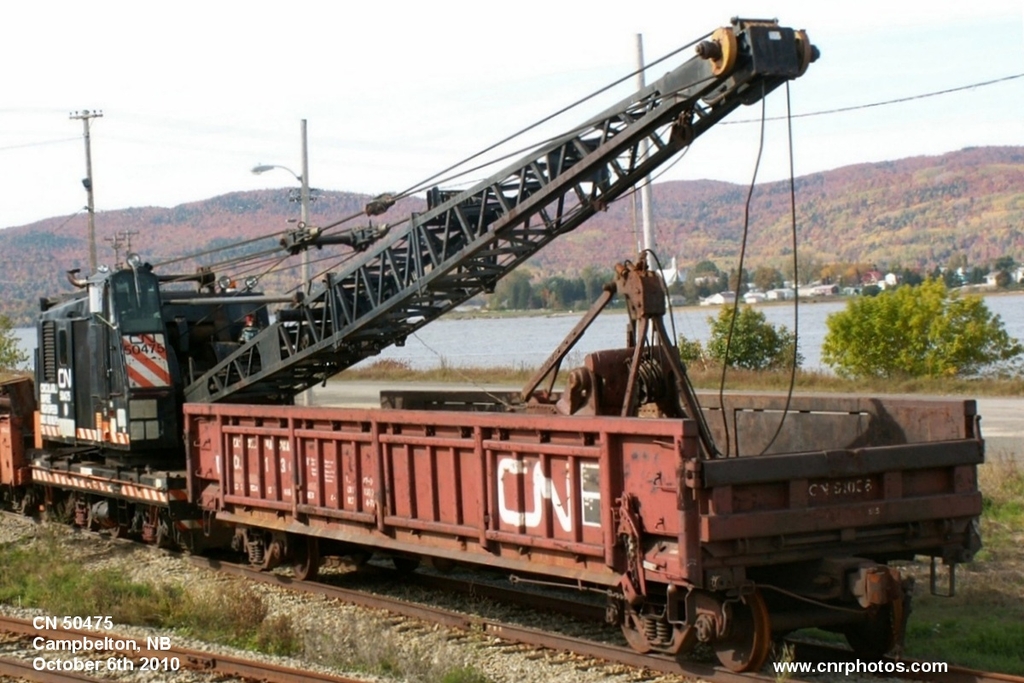
I could tell you about CN crane #50475, but what I was looking to show in this pic was a nice derrick car/gondola.
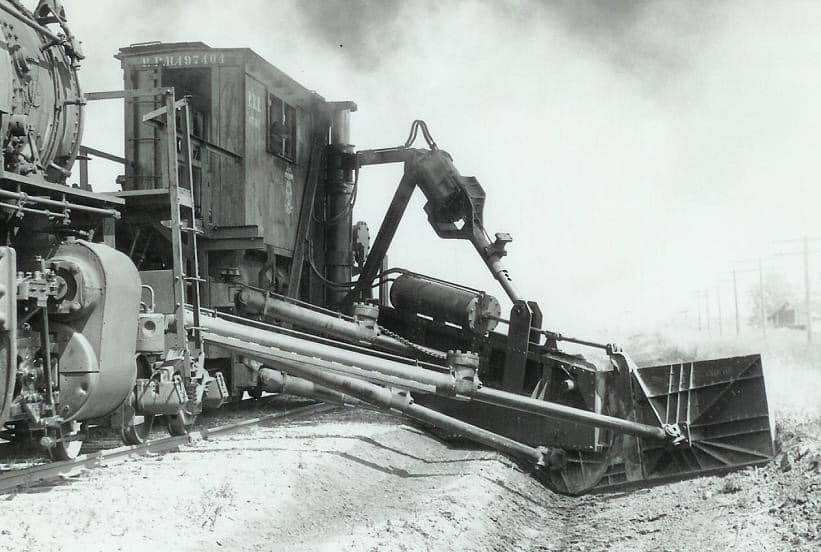
We’ve shown pics of Jordan spreaders before – Here’s a pic of one in front of a steamer. Jordan spreaders can be used for spreading ballast, clearing ditches, or for snow removal – great piece of equipment for around the MOW track.
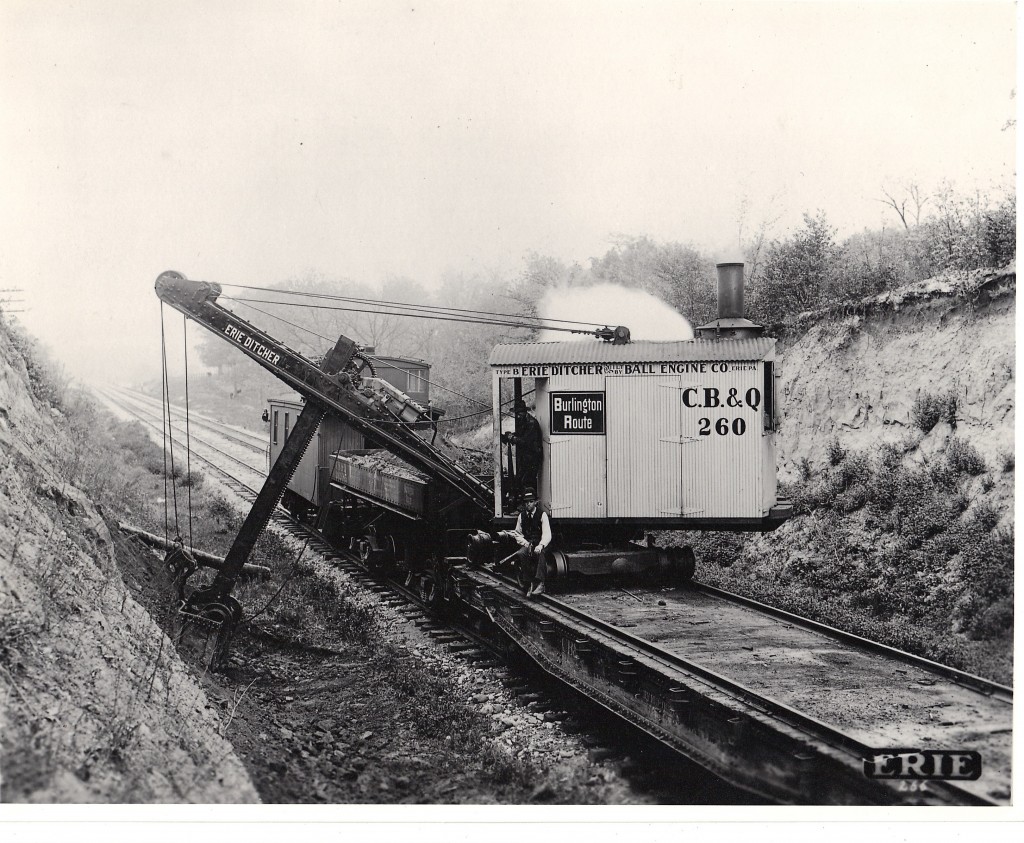
CB&Q #260 is an Erie Type B steam powered ditcher shown demonstrating its use. The pic was taken by Erie in 1923 as a promotional photo.
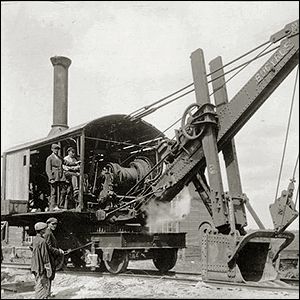
Here’s another railroad steam shovel – not much info, this was part of an asset management document!
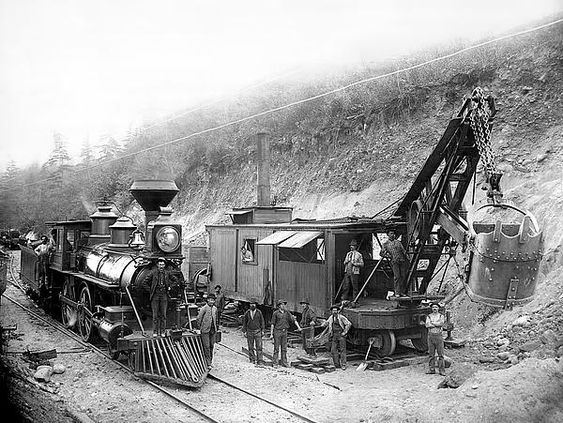
Great vintage photo of a steam shovel. I couldn’t find any written info, but the pic tells a great story!
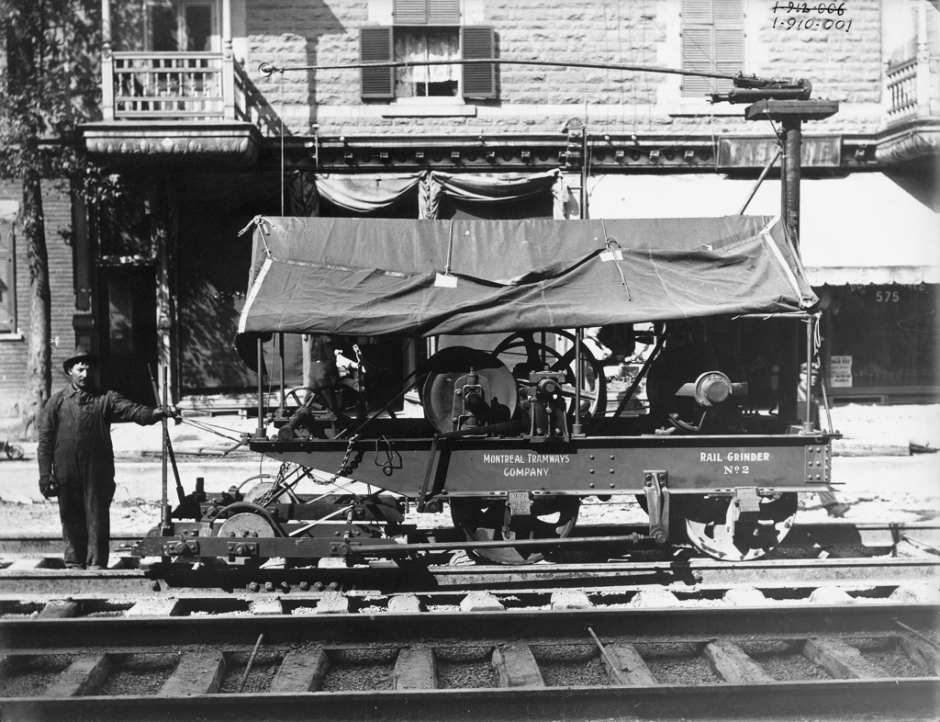
Rail grinders are key for keeping the rail shape ideal for the truck wheels. When you search on rail grinders, you tend to find a lot of modern equipment like the Loram grinders, but this pic is taken in 1912 in Montreal.
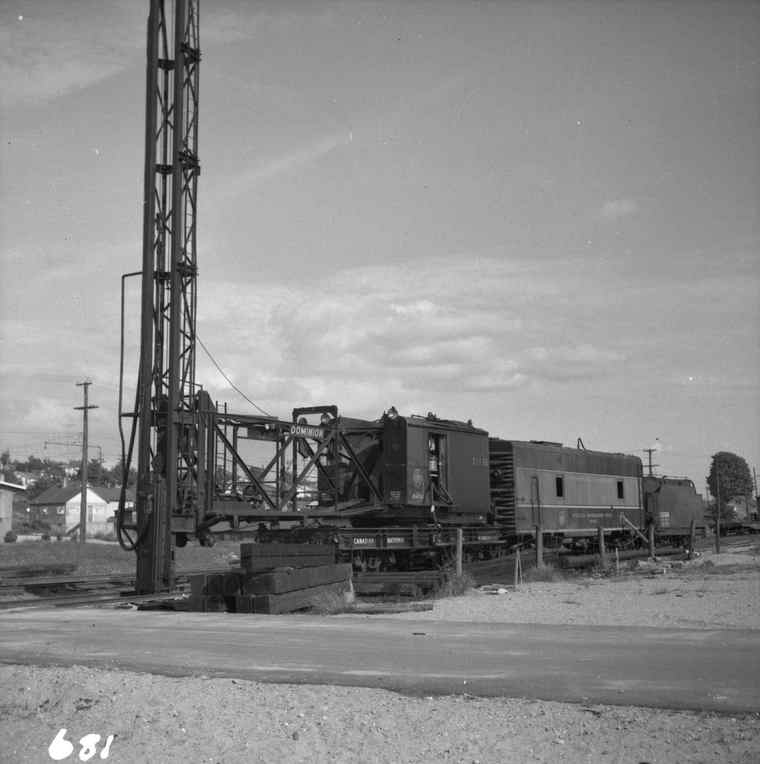
I think most model railroaders love the classic pile drivers – Here’s #50639 Dominion (Bridge) steam pile driver with steam generator unit and former steam locomotive tender.
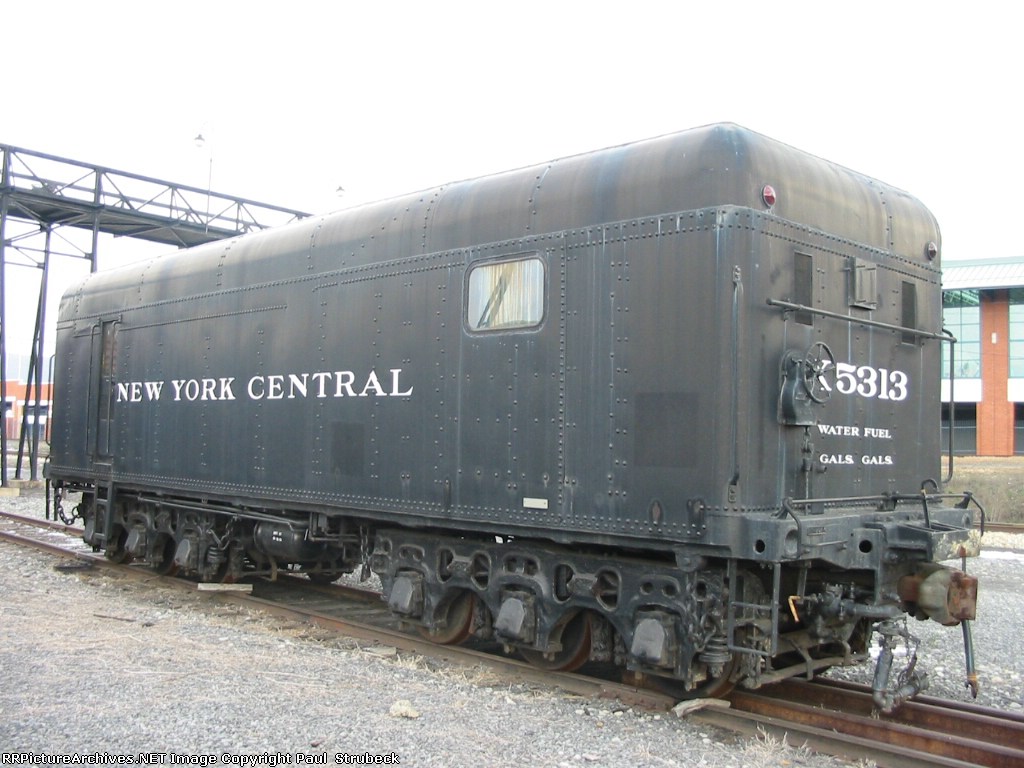
NYC #X5313 is shown as MOW equipment in this 2005 pic. This steam generator was once a tender that belonged to New York Central #5313 – a J-1d class Hudson, 4-6-4. The engine was sold to the TH&B who later performed this conversion on the tender for MOW service. Note the door and window cut into the sides, and the new top. You get a great view of those heavy duty 3 axle trucks.

We’ve covered snow plows before, and this is a bit modern for us, but this is UP #077 Snow Loader and #078 Snow Melter. Every time I see snow removal equipment, I see something new!
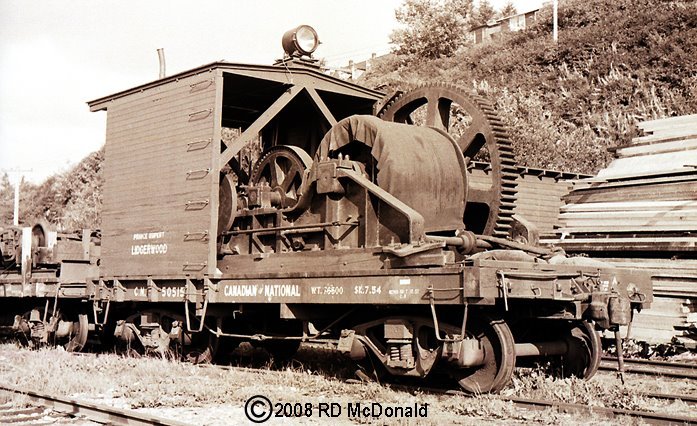
Another Canadian National pic – CN #0515 is a Lidgerwood (winch), built by Lidgerwood Manufacturing Co., New York City. Pic is taken in Prince Rupert, BC August 28, 1958. These powerful winches were used by railways and contractors to build and maintain tracks. They were powered by steam from the locomotive and were quite powerful dragging a plow through several gondola loads of ballast. They were always simply called a “Lidgerwood” since the manufacturer’s name was painted on the side and it was an easier way to identify it.
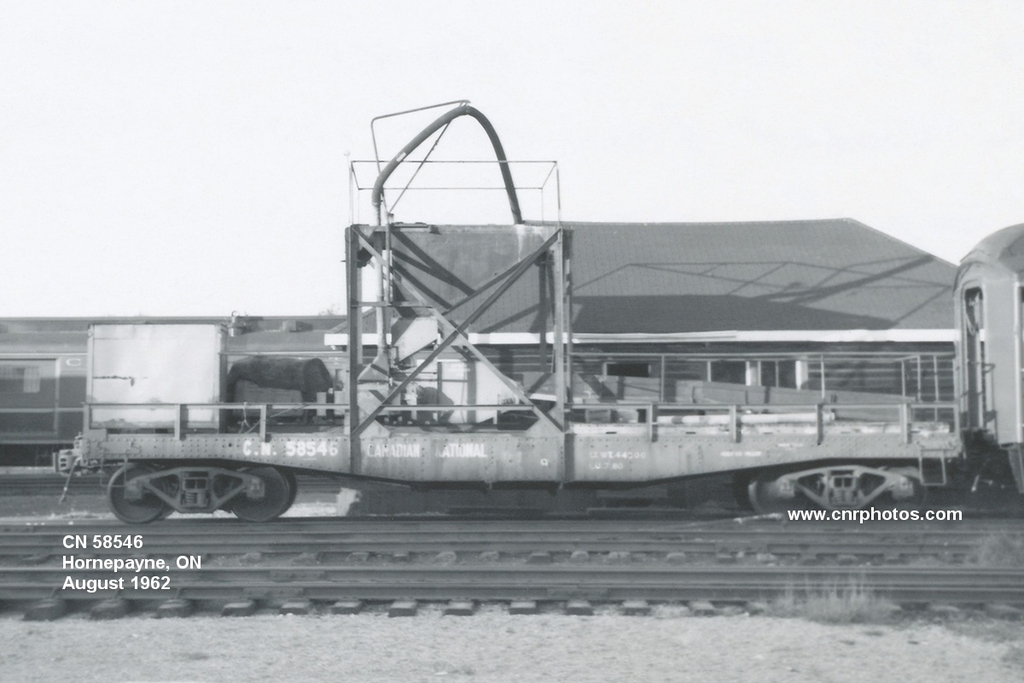
And another CN photo – CN #58546 is an ice crusher and loader car. My guess is this was to aid in icing reefers when they were distant from the ice house, but…just a guess… Okay – I know you wanted more, but that’s all I have on this car!
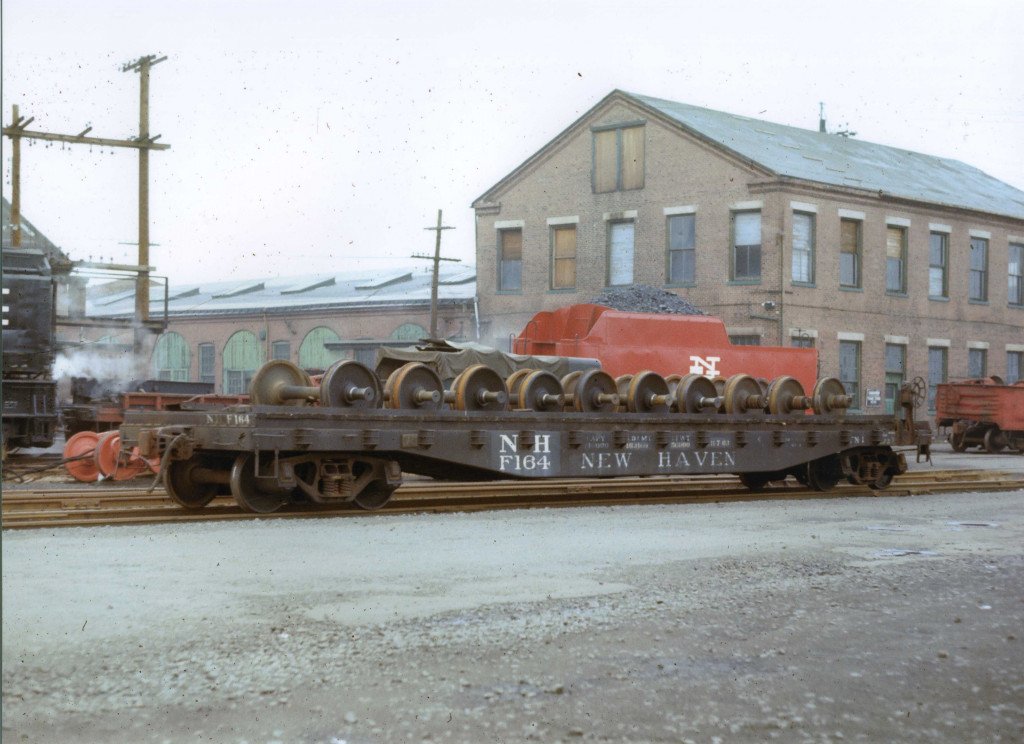
NH #F164 is a classic wheel flatcar – pic was taken in New Haven, CT, 1967. Wheel flatcars were usually seen around the car and engine facilities where wheels were typically switched out on the RIP track.
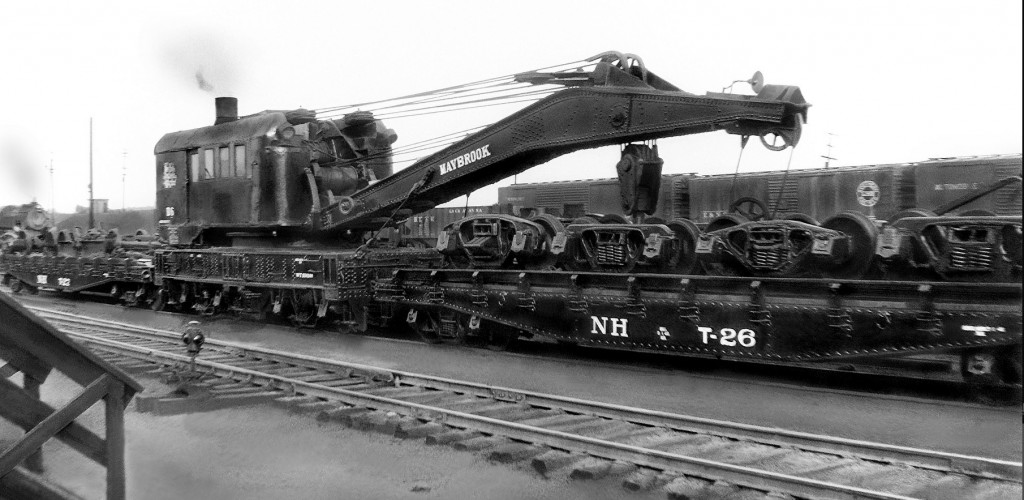
When your wreck train heads out to a derailment, you have to bring some spare trucks. Here’s a nice pic of a wreck train with a NH #T-26 carrying the spare trucks. #D-6 is the crane in the center with NH #T-27 on the other side. #T-27 appears to have wheels only. My source says it’s less likely for the wheel car to be sent out on the wreck train – it was much faster to change out the entire truck rather than replacing the wheels at the site of the wreck. Wheels were typically changed out on the RIP track.
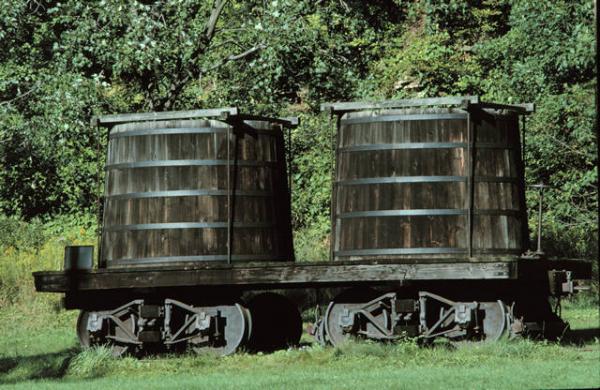
…And now – off to the off-topic: I had to show this pic immediately for fear that I wouldn’t find it again. I found this pic of the first type of petroleum tank cars! Write up: “Flatbed railroad cars with two oil tanks became the latest oilfield infrastructure innovation after James and Amos Densmore received a U.S. patent on April 10, 1866. The brothers from Meadville, Pennsylvania, received a patent for their ‘Improved Car for Transporting Petroleum,’ developed one year earlier in the booming oil region of Northwestern Pennsylvania.” Check out the modified archbar trucks. It appears that they have leaf springs and possibly an extra suspension layer.
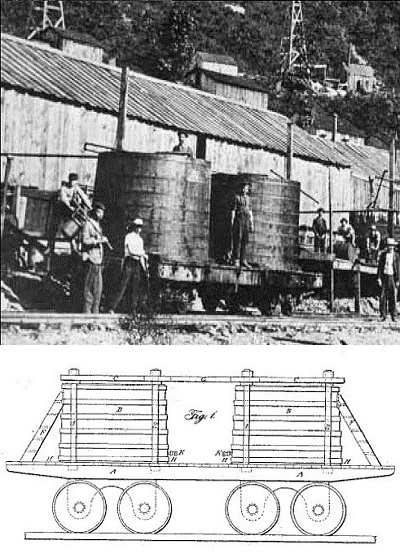
“Development of railroad tank cars came when traditional designs, including the flatcar, hopper, and boxcar, proved inadequate for large amounts of oil. New designs were born out of necessity, ‘as the fledgling oil industry demanded a better car for the movement of its product,’ notes American-Rails.com.”
“Prone to leaks and top heavy, Densmore tank cars provided a vital service, if only for a few years before single, horizontal tanks replaced them.” Find more about the Densmores at: https://aoghs.org/transportation/densmore-oil-tank-car/ .
I didn’t show much of the modern MOW equipment – Modern equipment is fascinating in their tasks and how they accomplish it. I always see a lot of raw power in MOW equipment. A lot of traditional non-revenue equipment, because it had to be reliable, but wasn’t required to meet a lot of the interchange requirements, ended up being unique pieces of engineering that lasted for years – much of it kludged from retired pieces.
Thx,
Kevin
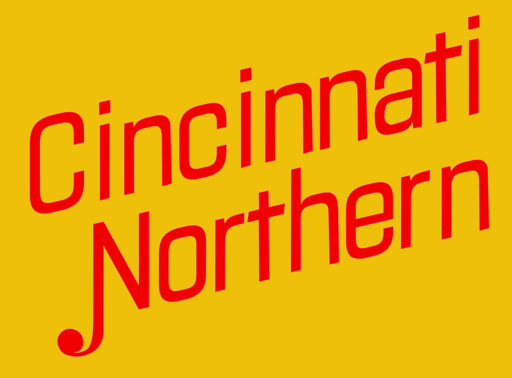
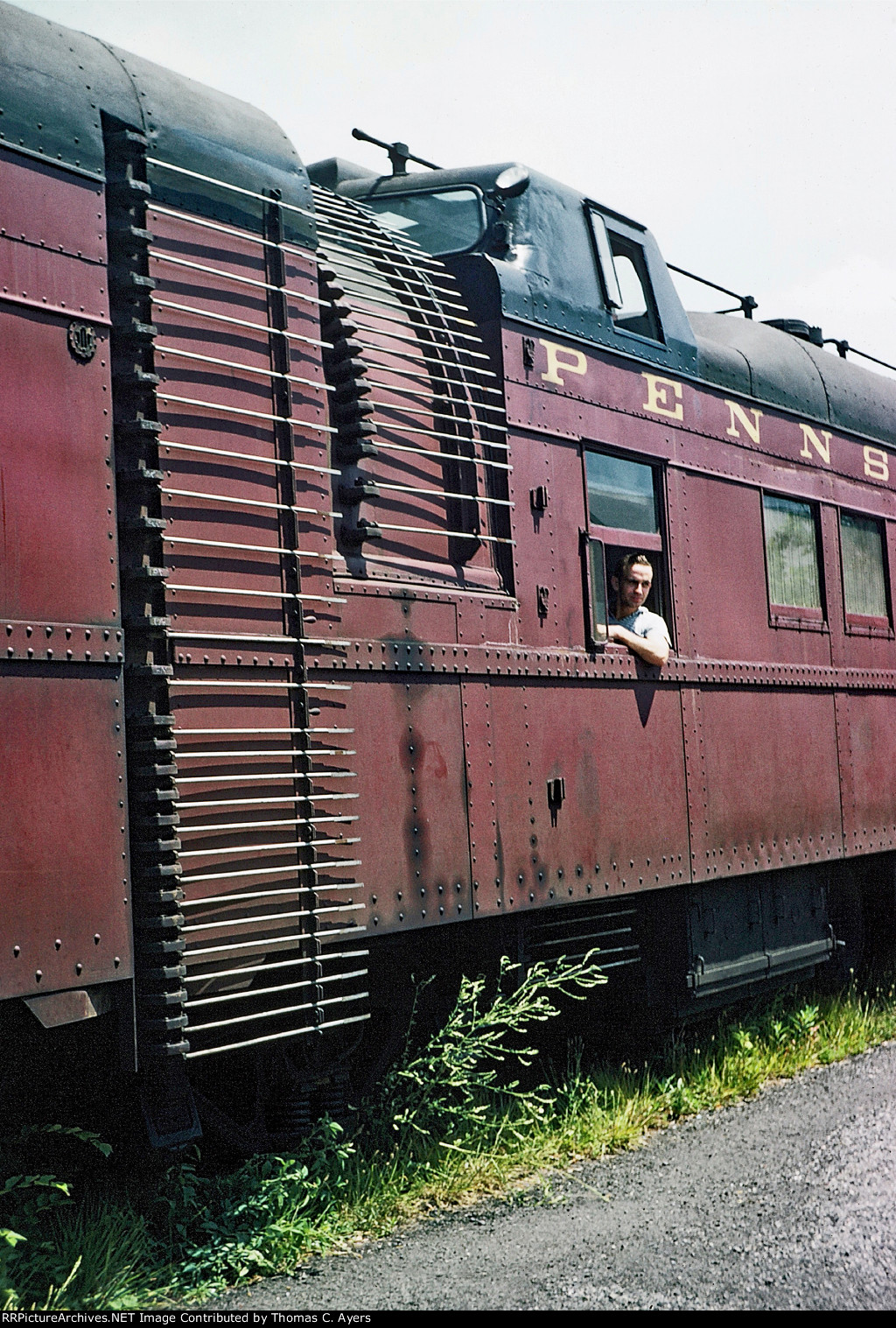
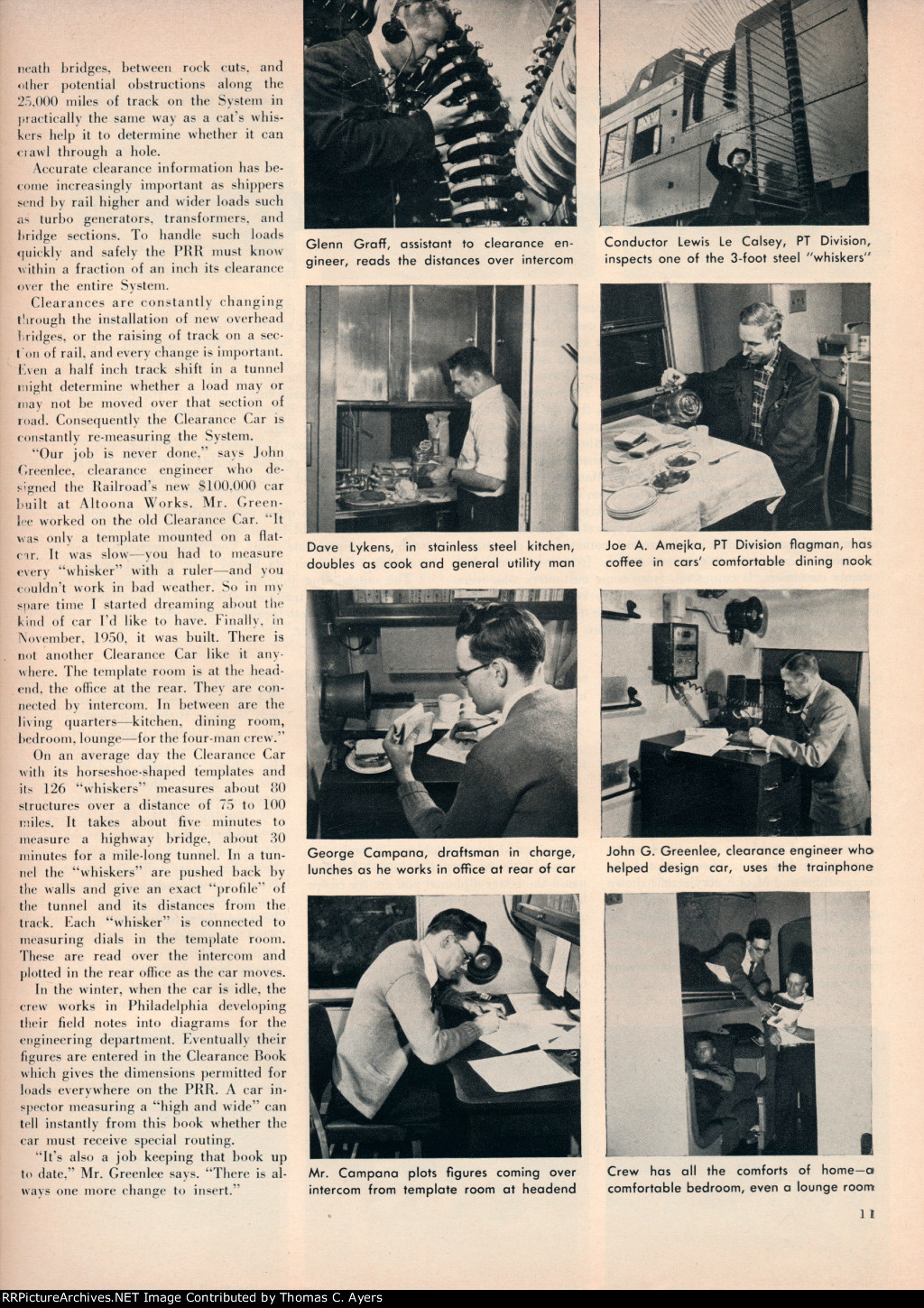
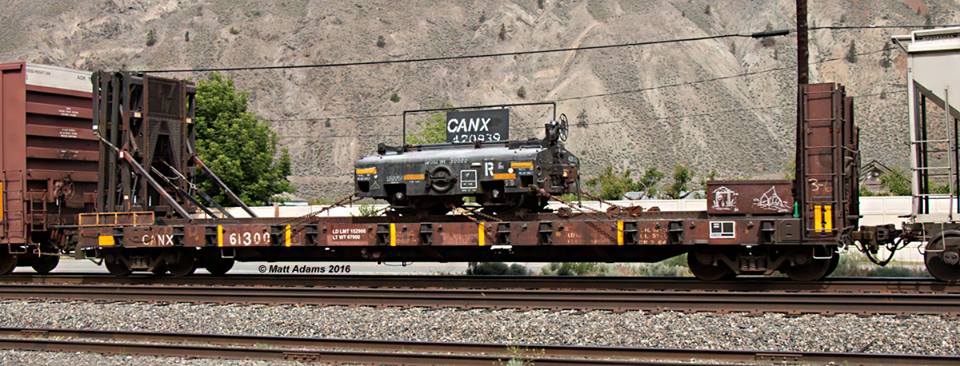
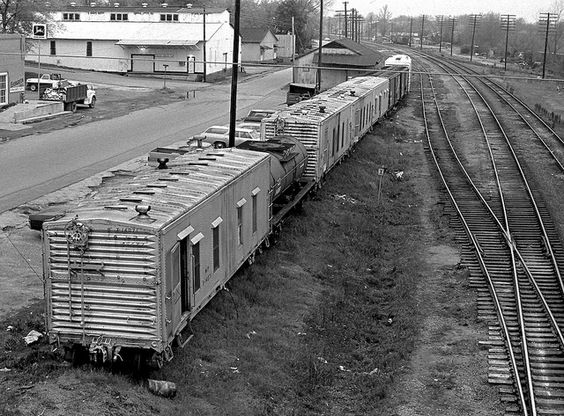
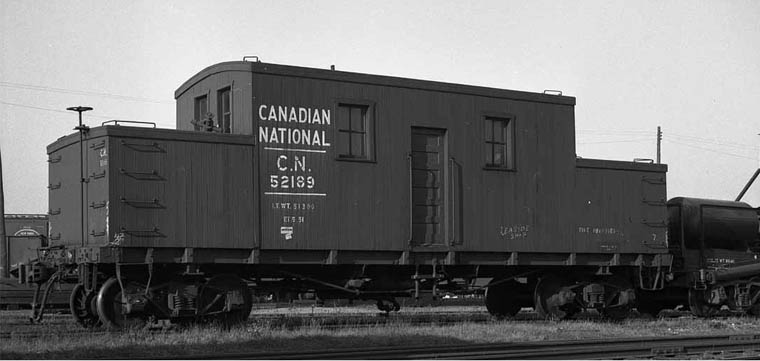
Comments